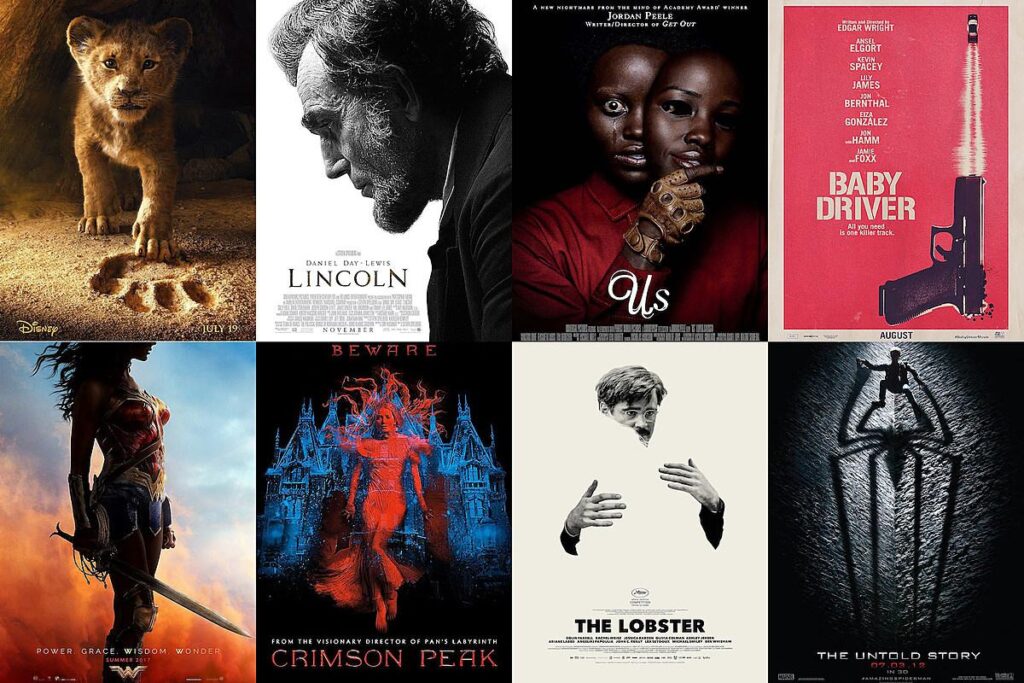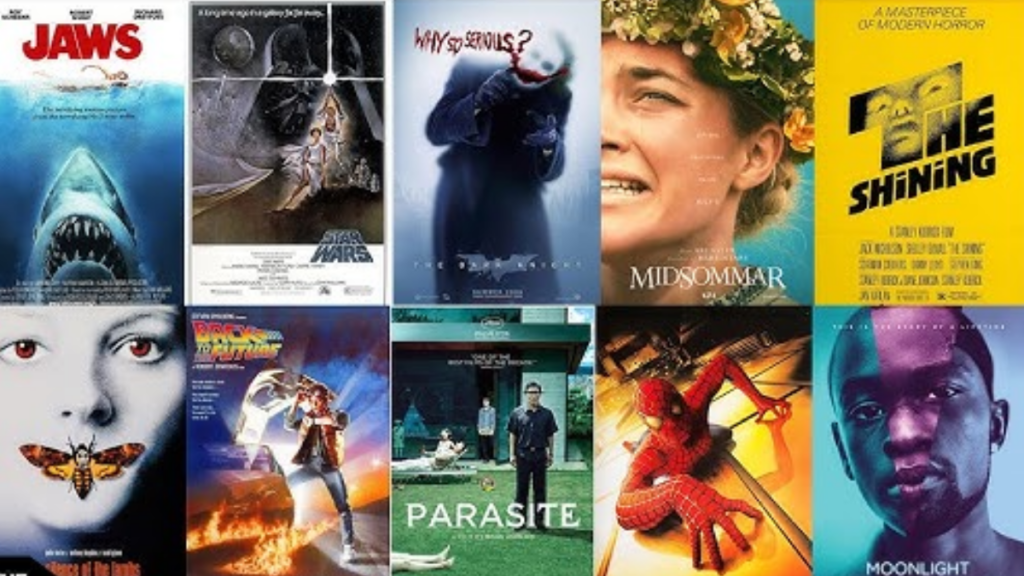Movie posters are more than just promotional tools; they are powerful pieces of visual communication that convey the essence of a film in a single glance. Through the strategic use of colours, fonts and imagery, designers tap into psychological principles to evoke emotions, create intrigue, and influence audience perception. Let’s delve into the psychological aspects of movie poster design and how these elements work together to captivate and communicate with viewers.
Colour Theory: Setting the Mood
Colours play a crucial role in movie poster design, as they can evoke specific emotions and set the overall tone of the film. Here are some common colour associations:
- Red: Often used in action, horror, and romance genres, red can signify excitement, danger, passion, or intensity.
- Blue: Associated with calmness, trust, and sometimes sadness, blue is frequently seen in science fiction and drama posters.
- Yellow: This bright colour often denotes happiness, energy, and warmth, making it a popular choice for comedies and family films.
- Black: Connoting mystery, sophistication, and sometimes fear, black is a staple in thriller, horror, and noir genres.
- Green: Often linked to nature, growth, and tranquility, green is commonly used in fantasy and adventure films.
By carefully selecting and combining colours, designers can create a visual shorthand that immediately communicates the film’s genre and emotional tone to potential viewers.

Typography: Communicating the Essence
Fonts are another vital component of movie poster design, as they can convey a lot about the film’s style and tone. Different typographical choices can evoke various psychological responses:
- Serif Fonts: With their traditional and formal appearance, serif fonts are often used in period dramas, historical films, and literary adaptations.
- Sans-serif Fonts: These clean and modern fonts are commonly seen in contemporary dramas, comedies, and science fiction films, suggesting a straightforward and accessible story.
- Script Fonts: Evoking elegance, romance, or whimsy, script fonts are popular in romance films, fairy tales, and animated features.
- Bold and Heavy Fonts: Connoting strength and impact, bold fonts are frequently used in action films, thrillers, and superhero movies to suggest power and excitement.
The choice of typography, along with its size, placement, and colour, works in tandem with other design elements to reinforce the film’s message and attract the target audience.
Imagery: Crafting a Visual Narrative
Imagery in movie posters is perhaps the most direct way to communicate the film’s content and mood. The choice of images, their composition, and the overall visual style all contribute to how the audience perceives the film:
- Character Focus: Featuring the main characters prominently can create an immediate connection with potential viewers, especially if they are well-known actors. This approach is common in dramas, comedies, and romance films.
- Action Shots: Dynamic scenes or intense moments can convey excitement and urgency, making them ideal for action films, thrillers, and adventure movies.
- Symbolic Imagery: Using symbolic or abstract images can intrigue viewers and provoke curiosity, often seen in psychological thrillers, mysteries, and art films.
- Backgrounds and Settings: The depiction of the film’s setting can provide context and draw viewers into the world of the movie, whether it’s a fantastical realm, a futuristic city, or a historical period.
The imagery used in movie posters is carefully selected and arranged to tell a story in a single frame, giving viewers a glimpse of the narrative and the emotional journey they can expect.
The Power of Design
The design of a movie poster is a complex and nuanced process that leverages psychological principles to engage and influence audiences. By thoughtfully combining colours, fonts, and imagery, designers create powerful visual messages that resonate on an emotional level, compelling viewers to take an interest in the film. Understanding these psychological underpinnings can deepen our appreciation of the artistry involved and the impact that movie posters have in the world of cinema.
–Silviya.Y
